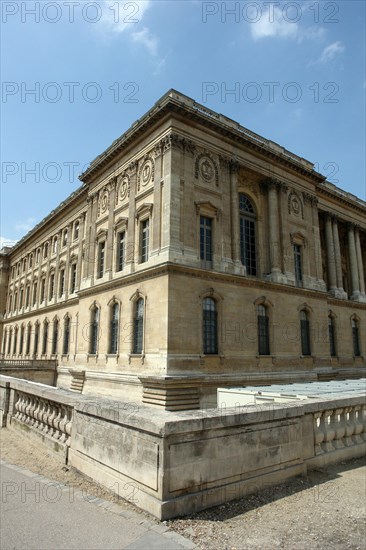Title
The Louvre
Caption
The Louvre. Originally the Louvre was a fortified Castle, and the Great Louvre Tower, erected by King Philip Augustus in 1190. One of it's main objectives was to oversee downriver of the Seine, which was one of the traditional invasion and raiding routes during the Viking era. With the transfer of goods needing to be transferred from the Order of the Temple to the Order of the Hospitallers, the royal treasure, previously kept in the Temple of Paris was transported to the Louvre in 1317. The Louvre was expanded by Charles V. Having become obsolete, the Great Tower was destroyed by Francis Ist in 1528, and in 1546, the transformation begun of turning the fortress into a luxurious royal residence. These works were carried on by Pierre Lescot, and carried on under Henry II and Charles IX's reign. Two new wings were added to the building. In 1594, Henry IV decided to bring together the Louvre Palace with the Palace of the Tileries, built under Catherine Médicis : it was all part of a "Grand Design", the first step of which was the Great Gallery. The Square Court was constructed under the reign of Louis XIII and Louis XIV, first by the "Lemercier" architects, then by the "Le Vau", quadroupling the size of the old court, of the Rennaisance. The decoration and development of the Palace was taken over thereafter by painters such as Poussin, Romanelli and Le Brun. However, all their work was rudely interrupted when Louis XIV chose Versailles as his centre of power and royal residence in 1678. For a long time, the Louvre stayed as it was. It wasn't until the 18th Century that new projects were undergone, most notably under Gabriel and Soufflot, who continued and completed the "Grand Design". Exterior view of the buildings from the Rivoli road.
Date
2007
Credit line
Photo12/Hachedé
Reference
HAC07249_2004_P1700058
Model release
No
License type
Rights managed
Available size
28,8Mb (1,4Mb) / 8,6in x 13,0in / 2592 x 3888 (300dpi)
